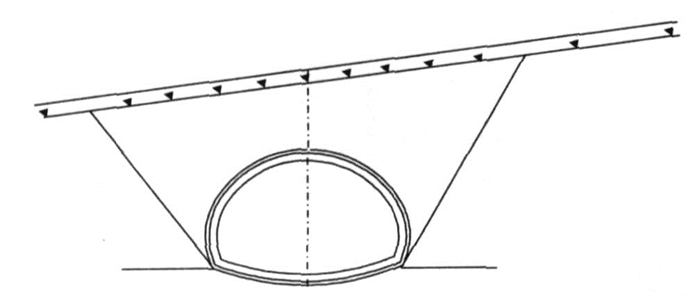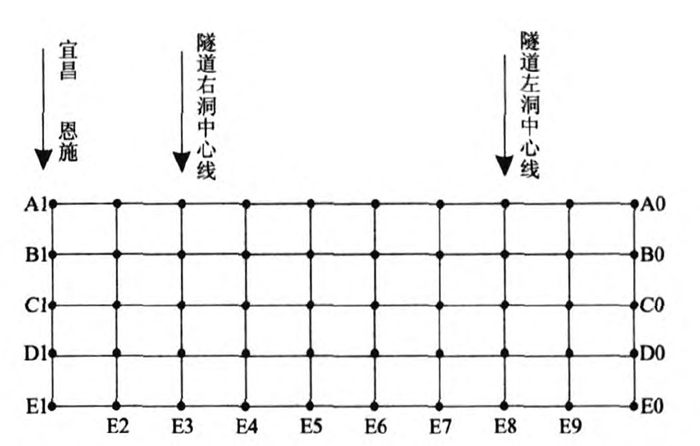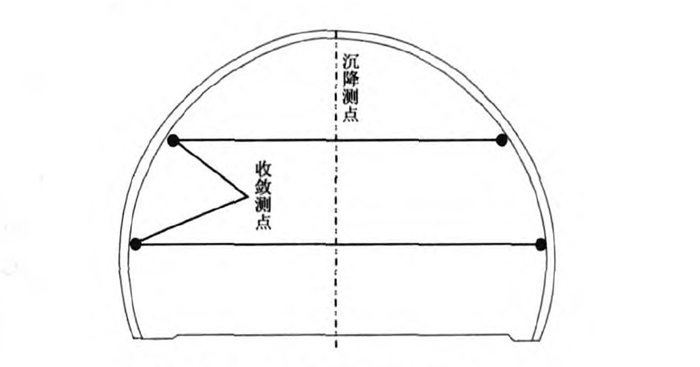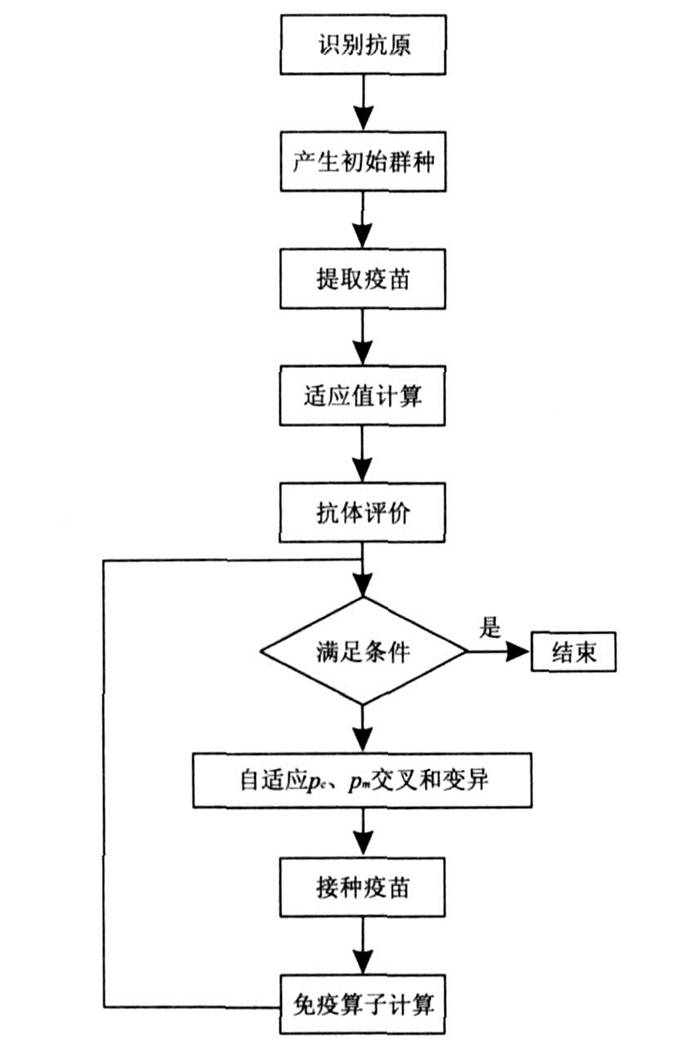Back-Analysis for Surrounding Rock Deformation Monitoring of Yunling Tunnel
-
摘要: 深埋长隧道中大变形、高应力、复杂的工程地质环境和长期使用需要使得对隧道围岩的稳定性分析成为决定深埋长大隧道工程成败的关键问题.利用位移反分析法分析确定围岩参数是目前研究的一个重点, 用以处理隧道围岩物理力学参数与量测信息之间的非线性关系, 对围岩二次支护方案进行判断、调整.而人工智能在识别、表达与处理这种复杂的非线性关系方面表现了极强的能力.通过对十漫高速公路云岭隧道围岩变形进行监控测量, 结合生物仿真系统和快速拉格朗日分析软件(FLAC) 进行正演分析, 利用神经网络的高度非线性、网络推理和网络耦合能力, 通过数值分析软件获得神经网络训练所需要的输出向量, 以可自适应调节的免疫算法为搜索工具对参数进行全局空间搜寻, 寻找最佳网络结构, 利用量测信息反分析寻找最佳参数, 得出结果再通过正向计算进行验证.通过智能反演分析, 改进了原勘测资料中的建议值, 调整了支护方案, 得到满意结论.表明本文所提反演分析对隧道围岩稳定性评价及信息化设计的实际意义.Abstract: Taking into account of complicated geological environment, large deformation, high stress and long-time use, stability analysis for surrounding rock is very important for the deep, long and wide tunnel engineering. Defining parameters by displacement back analysis has been the focus of current study. This method can be used to deal with the complicated non-linear relationship between the parameters of surrounding rock and the measuring information, and to judge and adjust the scheme of second support, while artificial Intelligence are adept in identification, representation and management of the non-linear relationship. The paper, through deformation monitoring for surrounding rock of Yunling tunnel of Shi-Man highway, combined the system of biologic emulation and the software of fast lagrangian analysis of continua (FLAC) to conduct direct analysis, took the advantage of the high nonlinearity, good reasoning and integration of neural network and obtained output vector by data-analysis software. Then we took adaptive immunity algorithm as searching tool to look for the best network structure for parameters in all room, searched for the best parameters with back analysis according information gained by measuring practically. Finally, direct calculation came out the results. This back analysis, improved the primary parameters of physical and mechanical parameters of tunnel surrounding rock, adjusted the scheme of support and obtained satisfied conclusion. The research results show that the back analysis proposed in this paper is of practical significance to the stability analysis of the tunnel surrounding rock and to informational design.
-
表 1 Ⅲ类围岩物理力学参数取值范围
Table 1. Parameters range of physical and mechanical of Ⅲ surrounding rock

表 2 神经网络训练样本
Table 2. Training specimen of neural network

表 3 围岩物理力学参数反演值
Table 3. Parameters obtained by back analysis

表 4 围岩物理力学参数反分析结果对比
Table 4. Comparison of observing displacement and calculation

-
An, H. G., Feng, X. T., 2001. The research of evolutionary finite element method of the stability and opti mizationat large cavern group. Rock and Soil Mechanics, 22 (4): 373-377 (in Chinese with English abstract). Arora, J. S., Dutla, A., 1997. Explicit and mplicit methods fodesign sensitivity analysis of nonlinear structures under dynamic loads. Appl. Mech. Review, 50 (1): 11-19. Gao, W., Zheng, Y. R., 2004. Integrated intelligent method for displacement prediction in underground engineering. China Civil Engineering Journal, 37 (4): 87-92 (in Chinese with English abstract). Goldberg, D. E., 1989. Genetic algorithms in search, opti mizationand machine-learning. Addison Wesley, New York. Holland, J. H., 1975. Adaptation in natural and artificial systems; anintroductory analysis with applications to biology, control, and artificial intelligence. MIT Press, Cambridge. Li, X. H., Wang, H. T., Jia, J. Q., et al., 2005. Ultimate displacement discrimination of stability and reliability analysis of surrounding rocks of tunnel and underground engineering. Rock and Soil Mechanics, 26 (6): 850-854 (in Chinese with English abstract). Scinvivas, M., Patnaik, L. M., 1994. Adaptive probabilities of crossover and mutation in geneticalgorithms. IEEE Trams SMC, 24 (4): 656-667. Tan, Y. Z., Shen, J., Xiao, J., et al., 2002. Overview of artificial immune engineering. Journal of Southeast University (Natural Science Edition), 32 (4): 676-682 (in Chinese with English abstract). Wang, D. G., Liu, Y. X., Li, S. J., 2000. Genetic algorithms for inverse analysis of displacements in geotechnical engineering. Chinese Journal of Rock Mechanics and Engineering, 19 (Suppl. ): 979-982 (in Chinese with English abstract). Wang, X. F., 2006. Intelligent and nonlinear analysis of the stability of deep-buriedtunnel, tssterm. Chongqing University, Chongqing (in Chinese with English abstract). Zhang, Z. Q., Feng, X. T., Yang, C. X., et al., 1999. Study on applicability of geneticneural network modeling of nonlin-ear fisplacement yi me series. Rock and Soil Mechanics, 20 (4): 19-24 (in Chinese with English abstract). Zheng, Y. R., Liu, X. H., 1996. Nonlinear science and rock mechanics problems. Chinese Journal of Geotechnical Engineering, 18 (1): 98-100 (in Chinese with English abstract). 安红刚, 冯夏庭, 2001. 大型洞室群稳定性与优化的进化有限元方法研究. 岩土力学, 22 (4): 373-377. https://www.cnki.com.cn/Article/CJFDTOTAL-YTLX200104002.htm 高玮, 郑颖人, 2004. 地下工程变形预测的集成智能方法. 土木工程学报, 37 (4): 87-92. https://www.cnki.com.cn/Article/CJFDTOTAL-TMGC200404016.htm 李晓红, 王宏图, 贾剑青, 等, 2005. 隧道及地下工程围岩稳定性及可靠性分析的极限位移判别. 岩土力学, 26 (6): 850-854. doi: 10.3969/j.issn.1000-7598.2005.06.003 谈英姿, 沈炯, 肖隽, 等, 2002. 人工免疫工程综述. 东南大学学报(自然科学版), 32 (4): 676-682. doi: 10.3321/j.issn:1001-0505.2002.04.032 王登刚, 刘迎曦, 李守巨, 2000. 岩土工程位移反分析的遗传算法. 岩石力学与工程学报, 19 (增刊): 979-982. https://www.cnki.com.cn/Article/CJFDTOTAL-YSLX2000S1033.htm 王心飞, 2006. 深埋隧道稳定性分析的智能化及非线性研究[博士论文]. 重庆: 重庆大学. 张治强, 冯夏庭, 杨成祥, 等, 1999. 非线性位移时间序列进化神经网络建模的适应性研究. 岩土力学, 20 (4): 19-24. https://www.cnki.com.cn/Article/CJFDTOTAL-YTLX199904003.htm 郑颖人, 刘兴华, 1996. 近代非线性科学与岩石力学问题. 岩土工程学报, 18 (1): 98-100. https://www.cnki.com.cn/Article/CJFDTOTAL-YTGC601.015.htm -










 下载:
下载:




